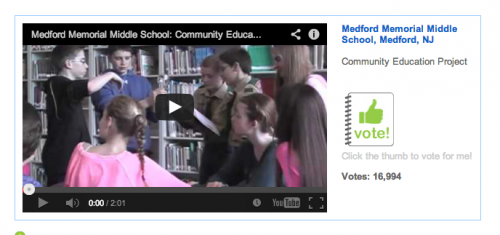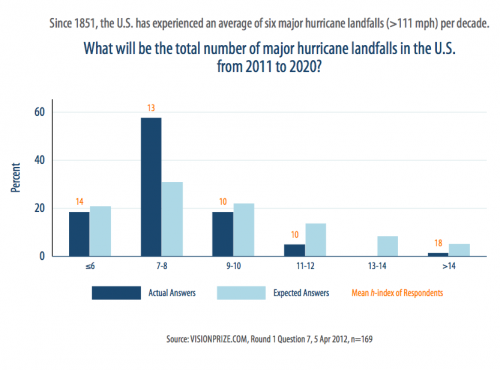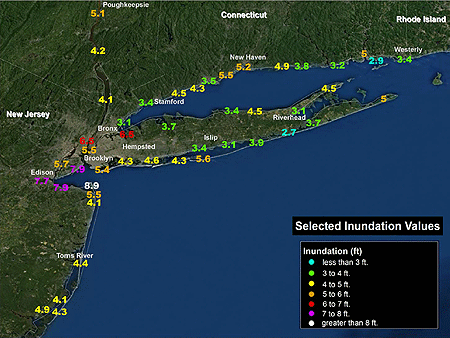No longer is it enough to offer a penny for your thoughts. As a vital player in the meteorological enterprise, your creativity is now worth a whole lot more–to be exact, 25,000 Euros, if you win this year’s Harry Otten Prize for Innovation in Meteorology. The prize, which will be awarded every two years, was established with funds from Netherlands meteorologist/entrepreneur Harry Otten, president of MeteoGroup/Meteo Consult. The prize website explains,
A substantial part of the national gross product in many countries is weather dependent. National weather services and the private sector have been innovative for more than a century to make better use of our meteorological knowledge. However, large gains are still to be made and the prize encourages individuals and groups to come with ideas how meteorology in a practical way can further move society forward.
If you can get your application together (the online process is actually quite straightforward) by the 10 March 2013 deadline, you might end up being one of the select three finalists to present your ideas to the Otten Prize jury at the European Meteorological Society meeting in September 2013. The winner will be announced within a day of the final presentations.
To get more of an idea of how the prize process works–and how inflation has marked up the value of your ideas by 2,500,000%–The Front Page interviewed Harry Otten Prize board member Richard Anthes. Dr. Anthes, who is well known to our community as an AMS past president and the president emeritus of UCAR, graciously provided the following responses:
Front Page: What was Harry Otten’s hope for this prize? Why is the Harry Otten Prize a good thing for our community?
Anthes: Harry Otten wants to encourage people to think of innovative ideas that will contribute to or use the science and technology of meteorology to provide services or products that will benefit society. The Prize is good for our community because it stimulates us to think in creative new ways about how our science can be advanced and used in constructive ways.
In the past you’ve described this prize for Innovation in Meteorology as rewarding “clearly innovative contributions of meteorology to society.” The prize website gives examples of, among other things, innovative ways of observing and innovative applications of existing technology. You even mention the development of useful mobile weather apps. I’m tempted to call it “innovation by meteorology” rather than “innovation in meteorology”. Where is the emphasis in your search for winners?
You raise a subtle point, and the answer is “both.” Ideas could include new ways of observing the atmosphere and related environment, new ways of forecasting atmospheric phenomena, or new ways of applying meteorological data, information, and/or forecasts to useful applications. Key words are new and creative. Incremental, relatively minor advances in methods or technologies are not likely to win the Prize. We are looking for “out of the box” ideas, original ideas which may appear surprising.
Can you imagine this prize being won by someone who isn’t even a meteorologist, perhaps a clever business idea or innovative teacher (educational ideas being included)? How do you judge such diverse innovations against each other on societal impact?
We can certainly imagine winning ideas coming from outside the field of meteorology, and in fact we would not be surprised to see innovations coming from people with backgrounds or fields quite different from meteorology. Perhaps the idea will come from someone looking for a solution to his or her problem that depends on meteorology, or a creative person from the arts or a scientific field other than meteorology. Ranking such diverse ideas could be difficult, but ultimately it comes to a judgment call by the Board after thorough discussion of the competing ideas.
The list of potential past prize ideas also includes climate adaptation…specifically, “using uncertainty in climate projections in a cost-effective adaptation technique”. How broadly construed is your definition of meteorology for the purposes of the prize?
We have a broad and open-minded Board and will consider seriously a broad range of ideas. Certainly ideas from fields that neighbor meteorology are encouraged, such as oceanography, air quality, climate, and space weather. I can also imagine a winner coming from education, information technology or communication. There needs to be a strong relationship to meteorology and potential applications to benefit society, however.
You say you’re not looking for “relatively small improvements” in existing ideas…perhaps you can give an example of what might be too small an innovation?
This is clearly a judgment call, but a slightly different way of displaying radar or satellite data on a personal device or a higher-resolution forecast model might be examples of incremental improvements that would not compete well. The important point is that we are encouraging people to really brainstorm and think of brand new ideas. These ideas do not have to be well developed, nor do they need to be proven. I sat down one evening with a glass of wine and let my mind wander, and in only an hour I came up with four very different ideas that I would have considered as competitive had they been submitted by a contestant. Naturally I am not applying for the Prize!
The prize is for ideas that are not just innovative but also practical, and realizable—why all three criteria and how would you define practical v. realizable?
Innovative is obvious—we are looking for new, original, creative ideas. Practical means that the idea could lead to an application in a relatively short amount of time, perhaps a few years, but not decades or longer. Thus a basic research idea that might or might not lead to applications many years down the road would not be appropriate. Realizable means that the idea could be implemented with a reasonable amount of effort and investment and would not run afoul of any physical laws or ethical issues.
How far along toward realization does the idea have to be? What sort of proof of practicality does the committee want when, at the same time, you’re not looking for ideas that are “well developed, implemented, or published”?
This is a very important question. We do NOT require that the idea be very far along in development or implementation. It is conceivable that someone could win with an idea that was not developed at all, but was described in enough detail for us to judge that the idea could be developed and implemented. In fact, we offer to help with the development of the ideas should the winner wish.
I can imagine some people might want to keep their best ideas for this prize under wraps until they’ve had a chance to establish them, perhaps profit from them. How do you convince people to apply with ideas that aren’t yet published or might later reap profitability?
We hope that this is not a serious issue. If someone has a great idea that is in an early stage of development, please send it in! We will protect the intellectual property of the proposer and make public only the broad outlines of the idea. We will also work with the proposer of the idea in any announcements of the winning idea. Finally, the amount of the prize itself is likely to help develop patents or property rights protection.
How often do you overhear ideas at meetings, workshops, etc., that seem to you to fit these qualifications? Are such ideas rare, even in our community?
I do not hear the type of ideas we are seeking very often in such fora. I think really fresh ideas are rare because most people are thinking of incremental advances as part of their jobs—better meteorological displays, higher resolution models and forecasts, more accurate forecasts, better use of ensemble techniques, more accurate or lower cost sensors, higher spectral resolution satellite observations, etc. But if people tried, I think they would be surprised at how creative they could be.
In the first round of the prize last year two honorable mentions were given out, but no first prize. What does this say about the minimum standards the Foundation is trying to establish for such a big prize?
The first prize is 25,000 Euros. That is a substantial prize and the Board wants to set reasonably high standards for winning ideas. But the standard should not be so high as to make it nearly impossible to win.
The foundation says “efforts of large teams in which the original idea cannot be clearly associated with an individual or a small group of individuals (maximum 3) will not be considered.” Why not consider prizes for large groups?
We want to reward individuals or very small groups that come up with a new idea. It is unlikely that a new creative idea will be generated by a large group of people. A large group might be necessary to implement an idea, but the idea itself is likely to originate from one or two people.
Winners will retain full rights to their ideas but when wanted help is offered to realize the winning ideas. What sort of help, under what conditions, does the Prize foundation offer?
We would discuss the possibilities with the winner. We might advise the person on how to implement the idea, and perhaps put the person in contact with an appropriate private company, university, or government lab that could help the person implement the idea.
What is your goal for the prize, in terms of the kind of impact the Prize can have on the community, or change it can bring about?
In the best case an idea would result in a new product or type of information that would generate revenue through a private company while supporting society by producing useful information or predictions, saving lives and property, improving the quality of life, and creating an economic benefit—an idea that would make a significant difference for the better.


